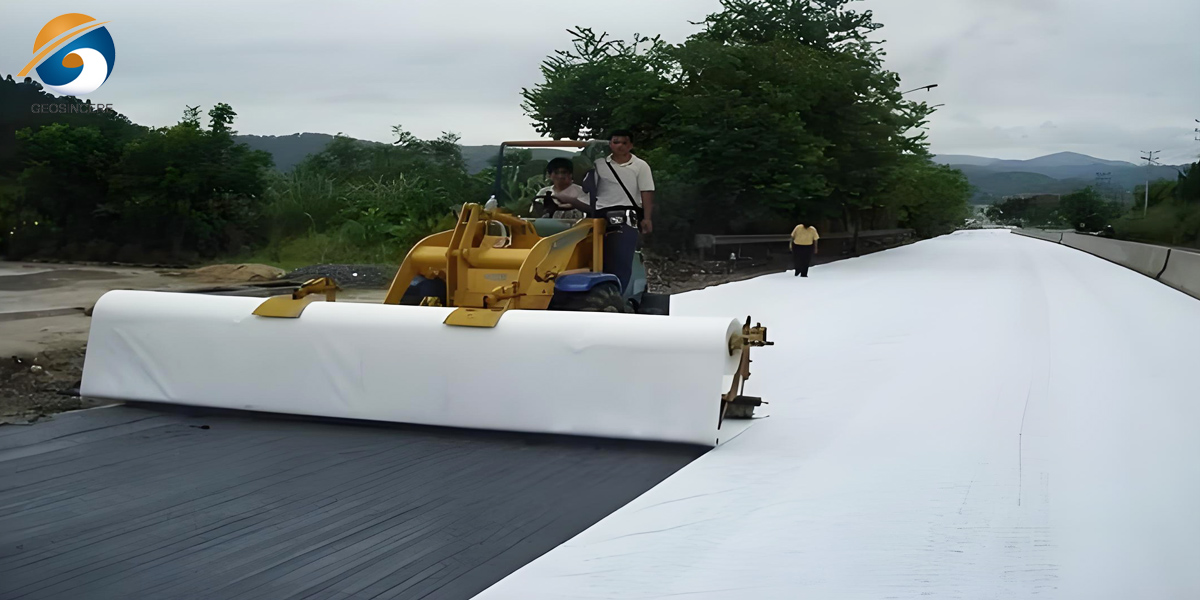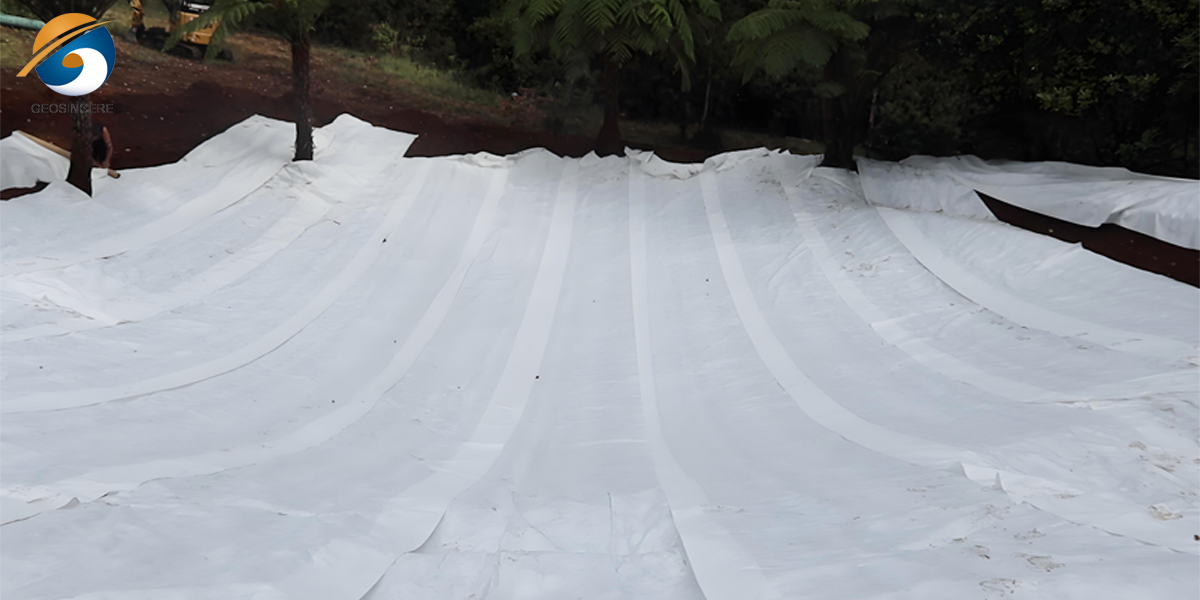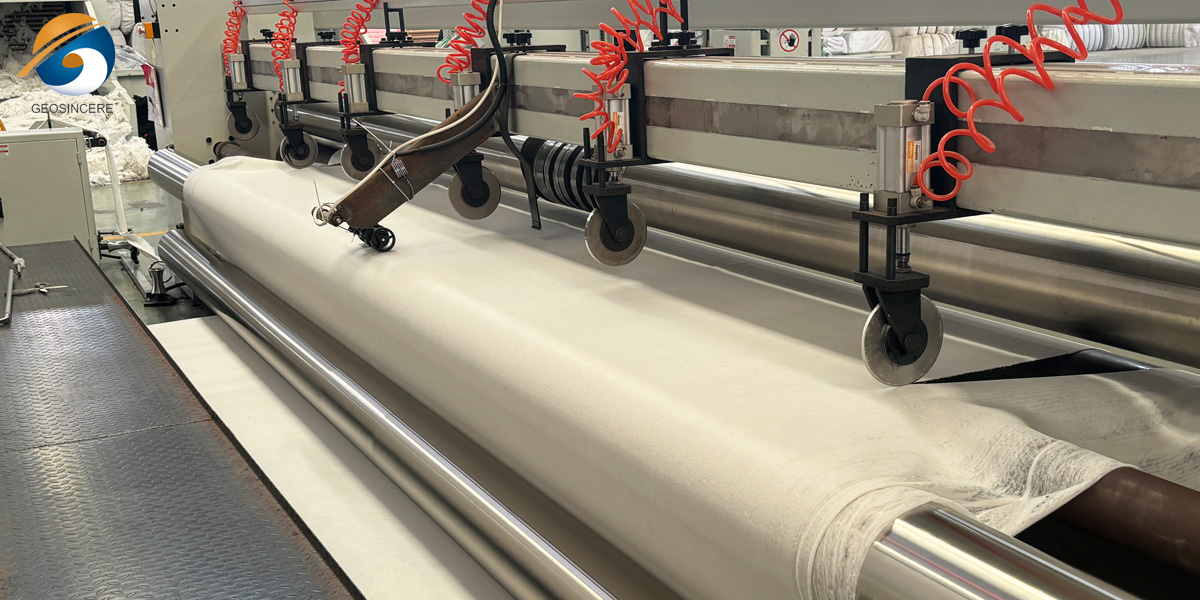How Do Filament Geotextiles Strengthen and Protect Our World’s Infrastructure?
Filament Geotextiles: The Invisible Engine of Modern Infrastructure
Beneath the roads we power on, in the back of the keeping partitions keeping again slopes, and inside the landfills managing our waste, lies an unsung hero of modern-day civil engineering: filament geotextile. These super nonwoven fabric, composed of non-stop artificial filaments, are some distance greater than easy cloths; they are state-of-the-art geosynthetic substances engineered to resolve complicated soil-related challenges. Their special residences and versatile features make them integral throughout endless building and environmental initiatives worldwide.
1. Beyond Fabric: Understanding Filament Geotextiles
Unlike their woven counterparts or geotextiles made from quick staple fibers, filament geotextiles are manufactured the usage of a non-stop filament process. Typically composed of durable polymers like polypropylene (PP) or polyester (PET), the core manufacturing technique is spunbonding:
1.1 Polymer Melting & Extrusion: Polymer granules are melted and compelled thru pleasant spinnerets, forming hundreds of continuous, molten filaments.
1.2 Filament Drawing & Cooling: These filaments are swiftly drawn (stretched) to align molecules and beautify strength, concurrently cooled by way of air.
1.3 Web Formation: The non-stop filaments are laid down randomly onto a transferring conveyor belt, growing a loose, uniform web.
1.4 Bonding: The quintessential step. The filament internet is bonded, usually thru one of two foremost methods:
- Thermal Bonding (Calendering): The net passes via heated rollers (calenders) which fuse filaments collectively at unique factors underneath pressure, growing a wonderful sample of bonded spots. This is the most frequent method.
- Mechanical Bonding (Needle Punching): While extra frequent for staple fibers, some filament webs bear needling. Barbed needles persistently punch thru the web, entangling the filaments and compressing the shape for improved thickness and mechanical stability.
1.5 Finishing & Rolling: The bonded material is cooled, undergoes exceptional manage assessments (weight, strength, permeability), and is rolled for shipment.
This procedure consequences in a material characterised through its random filament structure, developing a complicated 3-dimensional matrix. This structure is key to their performance.
2.The Multifunctional Powerhouse: Filament Geotextiles Key Properties and Functions
Filament geotextiles excel in numerous core features critical to geotechnical and environmental engineering:
2.1 Filament Geotextiles Separation
This is arguably their most popular application. Placed between two wonderful soil layers (e.g., native subgrade and imported combination base in a road), they stop intermixing. Without separation, pumping of high-quality soils into the combination happens below load (like traffic), main to weakened foundations, rutting, and untimely pavement failure. The filament geotextile acts as a robust, permeable barrier, keeping the integrity and characteristic of every layer indefinitely.
2.2 Filament Geotextiles Filtration
Filament geotextiles permit water to flow through their airplane whilst stopping the uncontrolled migration of soil particles. This is indispensable in drainage functions (behind keeping walls, in landfill leachate series systems, round subsurface drains). Their complicated pore shape traps soil fines at the material interface whilst preserving excessive permeability. This prevents clogging of drainage structures and soil loss (piping), making sure long-term machine functionality. Their filtration effectivity is cautiously engineered based totally on soil kind and hydraulic conditions.
2.3 Filament Geotextiles Reinforcement
While usually supplying decrease tensile modulus than woven geotextiles or geogrids, filament geotextiles do provide full-size tensile strength. This electricity can be mobilized to enhance the balance of soil structures. They assist distribute hundreds over a wider area, lowering differential contract and improving the usual bearing ability of susceptible subgrades. Applications encompass stabilizing tender soils below embankments, unpaved roads on terrible subgrades, and reinforcing soil layers in some erosion manipulate structures.
2.4 Filament Geotextiles Drainage
Primarily functioning as separators and filters, the enormously excessive in-plane permeability of many thermally bonded filament geotextiles additionally permits them to transmit water within their plane. This planar drainage functionality is vital for relieving pore water stress in the back of partitions or inside slopes, contributing to stability.
2.5 Filament Geotextiles Protection
Placed underneath geomembranes (used in landfills, ponds, canals), filament geotextiles act as a cushioning layer. They guard the inclined liner from puncture or abrasion prompted through underlying sharp stones, irregular subgrades, or overlying drainage aggregate. Their thickness and resilience take in neighborhood stresses.
3. Why Filament Geotextiles? Advantages Over Alternatives
The unique structure of filament geotextiles provides distinct advantages:
3.1 High Initial Tensile Strength: Continuous filaments inherently provide high grab and wide-width tensile strength compared to staple fiber nonwovens of similar weight.
3.2 Superior Elongation & Survivability: They exhibit high elongation at break, making them very tough and resistant to damage during installation (e.g., from aggregate placement or trafficking). This high survivability is critical on construction sites.
3.3 Consistent Pore Structure: The manufacturing process allows for tight control over pore size distribution (Apparent Opening Size - AOS), leading to predictable and reliable filtration performance.
3.4 Durability: Made from inert polymers (PP, PET), they resist biological degradation, rot, and many chemicals found in soil environments. UV stabilization additives ensure longevity even when exposed during construction.
3.5 Ease of Handling & Installation: Supplied in large rolls, they are relatively lightweight and easy to deploy, speeding up construction.
3.6 High Permeability: Their relatively open, continuous void structure ensures excellent cross-plane permeability (water flow through the fabric), essential for drainage and filtration.
4. Where the Rubber Meets the Road: Diverse Applications
The versatility of filament geotextiles translates into an incredibly wide range of applications:
4.1 Filament Geotextiles for Roadways & Railroads:
Separation/stabilization beneath unpaved and paved roads, rail ballast, and airfields; separation/filtration in subsurface drainage systems.
4.2 Filament Geotextiles for Retaining Walls & Slopes
Filtration behind drainage layers; separation between backfill and drainage aggregate; contributing to reinforcement in reinforced soil structures.
4.3 Filament Geotextiles for Landfills & Containment
Protection layer for geomembrane liners and caps; filtration within leachate collection systems; gas venting layers.
4.4 Filament Geotextiles for Drainage Systems
Wrapping around perforated pipes (subsurface drains, edge drains); filtration layers in French drains, trench drains, and sports field drainage.
4.5 Filament Geotextiles for Erosion Control
Stabilization beneath riprap or gabions; filtration layer in silt fences and turbidity barriers (temporary); component in turf reinforcement mats (TRMs).
5. Selecting and Specifying the Right Filament Geotextiles
Choosing the appropriate filament geotextile is not a one-size-fits-all proposition. It requires careful consideration of the project's specific requirements:
5.1 Primary Function: Is separation, filtration, protection, or reinforcement the dominant need? This drives the key property requirements.
5.2 Soil Characteristics: Grain size distribution (for filtration compatibility - AOS selection), strength, and chemical properties.
Loading Conditions: Static loads (embankments), dynamic loads (traffic), installation stresses (survivability requirements - CBR puncture, tear strength, tensile strength).
5.3 Hydraulic Conditions: Required flow rates (permittivity, permeability), gradient, potential for clogging.
5.4 Environmental Exposure: UV resistance requirements, potential chemical exposure, biological factors.
Engineers rely on standardized test methods (ASTM, ISO, EN standards) to specify minimum property values for:
5.5 Physical Properties: Mass per unit area (weight), thickness.
Mechanical Properties: Wide-width tensile strength and elongation, trapezoid tear strength, CBR puncture resistance, grab strength, seam strength (if applicable).
5.6 Hydraulic Properties: Apparent Opening Size (AOS - e.g., O95), permittivity, permeability (cross-plane and sometimes in-plane).
Endurance Properties: UV resistance (e.g., ASTM D4355/ISO 4892), abrasion resistance.
5.7 Installation: Key to Performance
Even the best geotextile is ineffective if installed incorrectly. Critical installation practices include:
- Subgrade Preparation: Removing sharp objects, rocks, vegetation, and debris; achieving proper compaction and grade.
- Roll Placement: Unrolling smoothly without folds or wrinkles; ensuring adequate overlap (typically 12-48 inches, depending on application and subgrade conditions) and proper seam orientation.
- Anchoring: Securing the leading edge (trenches, pins, staples) to prevent movement during aggregate placement.
- Cover Material Placement: Dropping initial cover material (usually sand or fine gravel) from a low height to avoid damage; spreading carefully; avoiding trafficking directly on the exposed geotextile.
- Seaming: Overlapping is standard; sewing or thermal bonding is used for specific critical applications requiring high seam strength (e.g., geomembrane protection).
6. The Future: Innovation and Sustainability
The filament geotextile industry continues to evolve:
- High-Strength Developments: Combining filament technology with advanced polymers or bonding techniques to achieve significantly higher tensile strengths for demanding reinforcement applications.
- Smart Geotextiles: Integrating sensors for monitoring strain, temperature, or moisture content within the fabric itself to provide real-time health data for infrastructure.
- Enhanced Sustainability: Increased use of recycled polymers (post-consumer or post-industrial) in manufacturing; development of bio-based polymers; optimizing production processes for reduced energy and resource consumption; focus on long-term durability reducing replacement needs.
- Nanotechnology: Exploring coatings or additives to impart specific functionalities like self-cleaning pores, enhanced chemical resistance, or photocatalytic degradation of pollutants.
7. Conclusion: The Essential GEOSINCERE Geosynthetic
GEOSINCERE Geosynthetic Filament geotextiles are no longer in basic terms incidental materials; they are fundamental, engineered aspects in the development of resilient and sustainable infrastructure. Their capacity to separate, filter, reinforce, drain, and defend solves complicated geotechnical troubles that would in any other case lead to structural failure, environmental damage, and full-size financial loss. From the highways connecting cities to the landfills managing waste and the structures defending our coastlines, filament geotextiles work silently and efficaciously below the surface. As technological know-how advances and needs for sustainable options grow, their position as the "invisible engine" of present day civil engineering will solely turn out to be extra critical. Understanding their properties, functions, and perfect software is integral for engineers, contractors, and absolutely everyone concerned in constructing the foundations of our world. Their non-stop filaments shape an unbroken community of energy and function, proving that sometimes, the most vital factors are the ones you in no way see.








